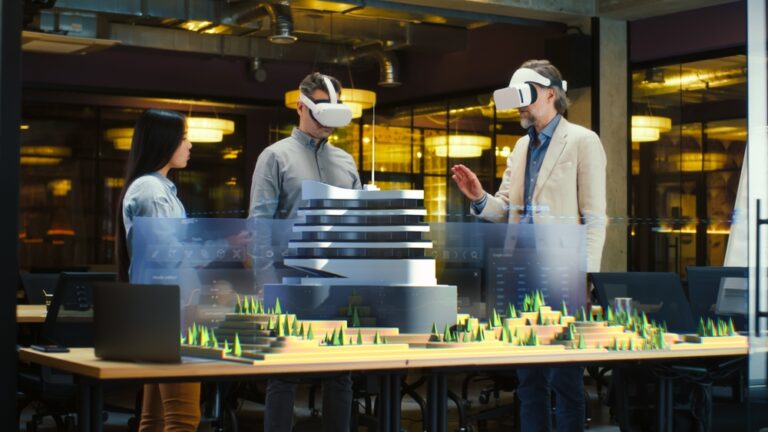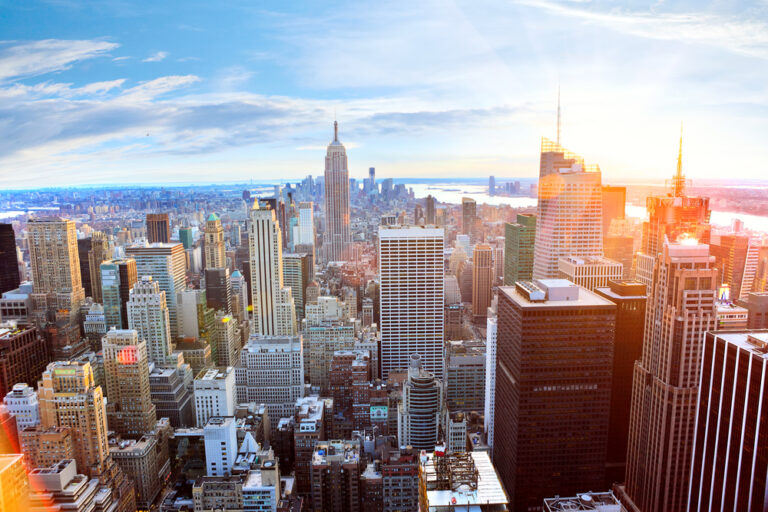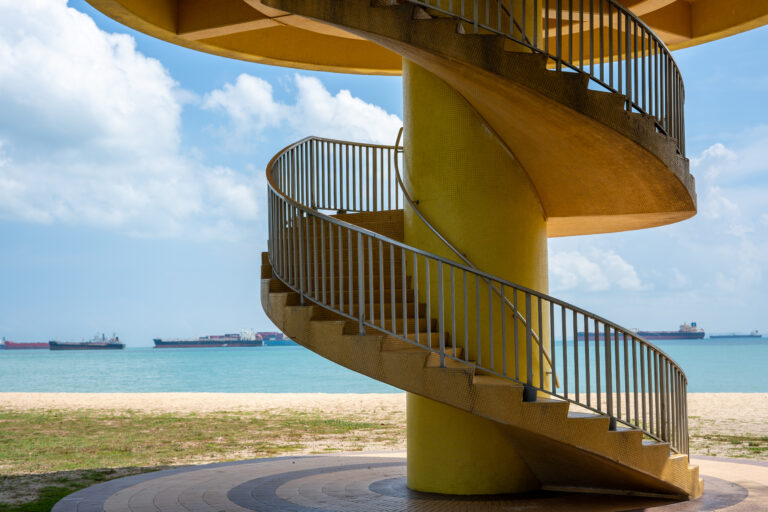People, planet, and partnerships: A framework on sustainable living in Asian megacities
This article is based on the Fireside Chat at the PropertyGuru Asia Real Estate Summit originally presented on 8 December 2021.
‘We all want this ideal, beautiful, green, sustainable, resilient world — and the key is sustainable cities and communities’

PropertyGuru Group’s Mallika Gadepalli and Milken Institute’s Curtis Chin talk about sustainable housing solutions in post-pandemic mega-cities and the technology that will shape the future of the Asia property sector.
Gadepalli: Curtis, you’ve been exposed to Asia for a long time. How has it changed?
Chin: When I think about 1995 Beijing — or Tokyo, Hong Kong, and even Manila — the ongoing story of this region is one of urbanisation. How do the leaders of those cities, with their resources, provide for the people already there and the thousands who are coming for work and opportunity? How do city officials give their constituents the basic infrastructure needed to live a better life? That’s the story of this region.
Gadepalli: In terms of volume, according to a report from the UN, we’re talking about almost 350 million people living in these cities in Southeast Asia alone by 2025. Is this sustainable?
Chin: I think it was around 2010 when more than half of China became urbanised. Now, the UN is projecting that more than half of this region will be totally urbanised. And during the Climate Change Conference (COP26), the UN also talked about how we needed to be green. Of course, we need to be, but we also need to be realistic. As I think about Southeast Asia and the Asia Pacific region, there’s a lot of housing stock and office stock that are not green. We need to recognise that some of these are brown (i.e., their designs do not factor in the negative environmental impacts of utilising and servicing them). We need to transition homes and office buildings from that kind of brown to a lighter brown until it becomes green.
I don’t think it’s realistic to say that we’re only going to build green because the problem isn’t what we’re going to build but rather what is already here. We must get developers, tenants, and others to think about what they can do to move things forward while they live there and own those properties.
Gadepalli: I think that’s such a great point. I think you’re really addressing the challenges that we face regarding sustainable housing in our markets in Asia, as well as how we think about them.
You’ve mentioned turning brown buildings green. There are many ways that communities, governments, and private sectors can really come together to create and shape initiatives like that. I think a great example is the “green score” we initiated at PropertyGuru (PG). We give buildings ratings on criteria such as accessibility to public transport and the green awards they receive.
The green score lets consumers think about sustainability on multiple levels. In addition to becoming more aware of sustainability issues, consumers gain more choices, and, at the same time, increase a community’s desire to move towards sustainable living as well
From the consumer sentiment survey we run twice a year, we were pleasantly surprised to discover that 82 percent of Singaporeans expressed willingness to pay more for sustainable features like solar panels, energy efficient cooling systems, or insulation for their windows and doors.
I think it gives us a lot of hope for the future to say that there are a variety of ways to look at this problem. For example, from a financing aspect, governments can provide more green loans not just to developers but maybe also to consumers. And from a marketing perspective, we can increase the awareness and the appetite for green living so that there would be more pressure coming from multiple quarters.
Chin: We all want this ideal, beautiful, green, resilient world, and the key is sustainable cities and communities. We have a shared vision, but how do we get there when it sometimes requires sacrifice? What it comes down to is that you pay one percent more or you pay 10 percent more. However, the last two years had the world dealing with COVID.
We’ve had people stuck at home and we’ve seen this pandemic underscore the inequality that exists. For example, how can a family living in a small home with limited Internet access be on the computer at the same time when parents need the internet for remote work and children need it to attend virtual classes?
Can you ask that family to spend on solar panels for a little bit of energy savings? Even if you said that it would give them appreciable energy savings within five years, they’ll counter, “But how will I pay for that upgrade right now?”
This raises the issue of finance. Sometimes, it requires capital to take a green idea to the next stage. If you don’t have that capital, it might just stay as a great idea.
I know PropertyGuru is involved here in Singapore. You’re also in Malaysia, Vietnam, and other parts of Southeast Asia. Do you have insights from these markets? What do consumers want?
Gadepalli: You raise a good point: no two countries are the same, and there are big gaps and differences in the types of challenges that you see in different places.
Malaysia, for example, has a huge informal employment sector, and affordable housing is a massive issue. In our consumer sentiment survey, one in three consumers wants to own their homes, indicating a strong desire for ownership. However, more than half of those surveyed said that they couldn’t afford the down payment. Another 40-plus percent said that not having formal employment was a barrier.
At PropertyGuru, we’ve built various fintech solutions and modules into our platform to help our Malaysian consumers find homes that are within their budget and guide them as they make one of the most important decisions they’ll ever make in their lives. We asked them a set of questions based on financial criteria, so we can tell them what is within their budget.
At a broader level, we are also working with the Malaysian government, which is investing USD 500 million to build 14,000 new homes for people who are in a certain bracket that they’ve defined.
I think these solutions are crucial, and platforms like PropertyGuru can be used to increase people’s awareness of such solutions and provide financing solutions to bridge economic gaps.
Chin: Traditional banks will be like, “Well, do you have any collateral to buy?” or ”Do you have a regular source of income to rent?” It differs from country to country, but across Asia, banks treat consumers the same way.
Fortunately, fintech offers the chance to revolutionise the property market, and it helps both lessees and lessors. Through fintech, potential tenants can better understand what they can afford given their salaries. Property owners, in turn, can expand their network of potential tenants and take comfort in knowing that homeseekers can afford their rates.
Also, fintech solutions for real estate don’t have to be in the traditional style of determining a person’s credit rating because people don’t live like they used to. For one, people are changing jobs more often. Apart from that, the pandemic rendered many people unemployed, so how can lessors become confident that someone is going to be a good tenant?
Gadepalli: I think you’re pointing to another important topic, which is inclusion, and how a healthy, sustainable city should be a happy and inclusive place for all. Another point is how financing plays a crucial part in ensuring inclusivity. What is your experience with inclusive cities and varying approaches to creating sustainable cities?
Chin: Ten years ago, I sat on the board of directors of the Asian Development Bank (ADB). We focused mostly on issues of economic growth and prosperity, but we found that we needed more inclusive, equal, and balanced growth. We thought of different ways to give people access to housing. And to give them better access to housing, we had to give them better access to capital.
When I think about inclusivity, I want to make sure that beautiful apartments are available to everyone, such as by offering them at different price points. I’m not saying that the solution is to make everyone equal. Rather, it’s to give people from all walks of life an opportunity at a better home, a better place to work, and better access to healthcare services.
One of the things that really became clear during the pandemic was how housing, work, and health were all related — that housing was not just about where we live but how we live.
Related: The legendary voice of Siri tells it all
Gadepalli: Beyond socioeconomic inequality, I think this period also highlighted other issues, such as racial inclusion. In Singapore, we found out that there is racial discrimination in the rental market, so we worked with the government, our agents, and with listings. Using AI technology, we identified and flagged listings that might have had discriminatory language, and then we blocked those listings. I think it’s amazing that technology is effective in increasing inclusion.
Chin: So often, we hear about negative things about technology, but there have been examples of technology aiding in promoting inclusion. It’s no longer just about fintech but also about making sure that gray areas like racial inclusion do not undermine our efforts to strengthen our communities.
In the US, we often say that cities should spend a third of their income on housing, as it is critical in shaping people’s lives in the long run. To illustrate, in America, schools are financed by real estate tax. So, if you live in a nice area, your school is very good, but if you live in a poorer area, your school isn’t so great. We need to change that to make sure that everyone has a chance to achieve the American dream. This could help more people move up from their initially humble circumstances and ensure that limited housing doesn’t hinder them from moving forward.
Gadepalli: I think that’s a great point because we should also talk about what you think makes a great future for sustainable cities. Based on PG data, public transport is such an important enabler of inclusion and security. To illustrate, being connected to public transport makes a massive difference to children’s future.
Broadly speaking, better public transport leads to better life outcomes. This is evident based on how popular our geosearches have become. To geosearch in our platform is to perform public transport node searches. In Singapore, users can search by MRT station, whereas in Thailand, users can search by BTS station. I think this is a very useful feature for Asian megacities, as it allows people to travel to work efficiently and be connected to the broader city ecosystem effectively.
Chin: From my time at the ADB, one of the takeaways I had was a Chinese saying that goes, “To get rich: first, build a road.” To add to that, one of the Milken Institute panels that I attended focused on “real assets,” which pertains not only to real estate but also infrastructure.
In America, many people moved to the suburbs because they wanted to live in bigger spaces and wanted their children to go to better schools, which is why we have all these communities around the outskirts of the city with not-so-great public transport. Because of that, we developed a car culture that’s both good and bad. It’s mostly bad, but maybe one day, we’ll all have electric cars.
As we think about cities and housing, we must also give importance to basic services — transportation, energy, water, and sanitation systems — because the infrastructure of an increasingly urbanised Asia is either over-burdened or outdated.
I work with this private equity fund called TAEL Partners, which focuses on sustainable infrastructure, and for me, that has to be the way of the future. And it’s not just because the UN has “sustainable cities and communities” as one of its Sustainable Development Goals, but because we want to improve the quality of our lives.
We want public transportation and utilities that work. We might take electricity for granted in Singapore, but for my friends in Nepal and elsewhere around the region, it isn’t always a certainty that you’re going to have as much power as you would like. You need to invest in that, but also do it in a way that involves the private sector and the community because the solution in how we build sustainable cities goes back to financing.
Gadepalli: Home developers are also making changes in how houses look and feel because these aspects and people’s preferences have changed a lot. Moreover, employers are changing their policies about where you can live and work, and offices of the future are going to change too.
Still, there’s quite a contrast between the haves and the have-nots, as well as the developed and still-developing. Here in Singapore, for example, large houses are quite popular, so the demand for four-bedders has absolutely skyrocketed in the last year.
Chin: Unfortunately, movies and TV shows have led some of us to believe that everyone’s living in gigantic houses and cars, and we don’t see the consequences of that. One of the great things about Singapore is that it’s a city-state that continues to learn from its past. Lee Kuan Yew, at one point, regretted that they tore down so many historic buildings. And having been here in the last eight or nine days, I’ve read some interesting stories in the paper, such as how they’re moving to preserve a structure or that the government has given some grants.
What’s interesting is that when I look at some of the things that have been preserved, they’re from a time when we didn’t have air conditioning. Maybe we’ve lost some knowledge on how to build structures that can be cooled efficiently. It appears we don’t know how big windows are supposed to be or how high a ceiling must be because we just assume that, if we’re rich, we’re going to install air conditioners. How cool would it be if we were rich and smart enough to see the real consequences of letting go of low-energy design principles?
Gadepalli: Actually, we did see low-energy strategies during COVID. Here, for example, air conditioning dues were drastically reduced because workers were not at the office. They stayed at home, and they just opened their windows to keep cool.
I think it has led to other changes as well. For example, there’s been a real increase in the use of recreational parks and public spaces, especially during COVID. People in Singapore have just been out and about whenever they could because mental health has been so important to work on.
Chin: I will say this to developers and to our municipal authorities: we need to figure out a way to have more green space.
I think you’re absolutely right about how COVID showed us how we benefit from green spaces, as they provide an opportunity for people who might live in a small home to have that shared public space that they will benefit from. Think of what makes a city great. A great city is not just about the beautiful skyscrapers. It’s a mix of greenery and fancy buildings.
Related: A future like Wakanda: Why big cities should embrace and build on their past
Gadepalli: Exactly. COVID certainly had pros and cons, but there had been some lessons that, hopefully, will shape things for the better. We’re seeing vertical gardens as a concept being pushed now, as well as gardens on top of skyscrapers.
On that note, do you have any final thoughts on sustainable living in Asian urban cities?
Chin: One thing I hope people can take from this conversation is that even as we look up and become dazzled by luxury megastructures, let’s not forget the communities below. Too often, I feel that divide has been accentuated. Do we really need that new jumbo shopping mall, and if we do need one more, let’s think about the people who might be displaced, the people in the communities surrounding it. We must not forget inclusivity because the strength of any city isn’t the fanciness of its skyscrapers, but the resilience of its community.
For me, that was also a lesson from COVID. Some cities really struggled, but others, like many in India, rose to the challenge and brought themselves forward.
Gadepalli: There was a gap in government action, so the private sector and the communities just rose up together.
Chin: When I was with the ADB, I probably drove some people crazy because I would always talk about how it would be if we we’re serious about more balanced and sustainable development. I insisted that we should focus on what I call the 3Ps: people — again, we mustn’t forget the poorest in the community; planet — as we develop real estate, let’s remember its impact on our environment; and partnerships, the ones that bring the government, private sector, and civil society together for building a strong community, which, at the end of the day, is what is at the heart of a resilient sustainable city.
Gadepalli: That’s a great framework — people, planet, and partnerships. Those are the 3Ps for responsible — and hopefully — sustainable urban development.
I completely agree. For me, it would be all those actionable levels, whether it’s at a personal or company level, where you can increase awareness of this really important topic and bring about solutions, just like what we’re trying to do at PropertyGuru.
At a personal level, we’ve launched an app that tracks your energy emissions and makes you think about whether you’re taking the public transport today or not, your usage of plastic, or even whether you’re eating meat or not, as that’s a big contributor to greenhouse gas emissions.
At the company level, PropertyGuru has undertaken many internal and community initiatives last year, such as the green score we mentioned earlier.
I think your framework really works well because it is all about people, planet, and partnerships — communities, corporations, and governments working together to make all of these sustainability changes happen and come to life.
This article was originally published on ARES White Paper Volume 2. For more information, visit AsiaRealEstateSummit.com or email [email protected].
Recommended
Why everyone is moving to Selangor and Johor: Malaysia’s real estate comeback
Malaysia’s upturn in fortunes is especially prevalent in secondary destinations such as Selangor and Johor
Penang’s silicon boom: How the US-China tech war is supercharging local real estate
Penang’s booming semiconductor industry has created ripples within the local real estate sector
ARES White Paper Volume 2: Unravelling the power of data revolution in real estate
Insights on proptech, smart cities, and sustainable development
ARES Digital White Paper Volume 1 tackles the fundamentals of responsible building
Green and climate heroes join forces to discuss how Asia Pacific can weather the current environmental crises and the looming effects of climate change







